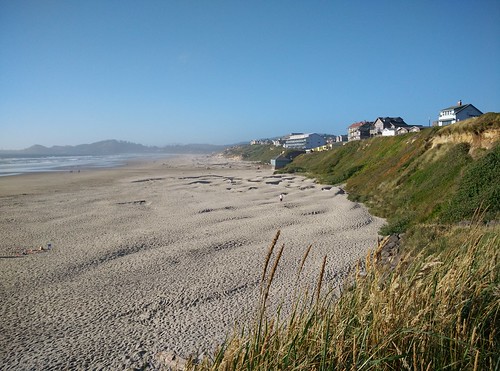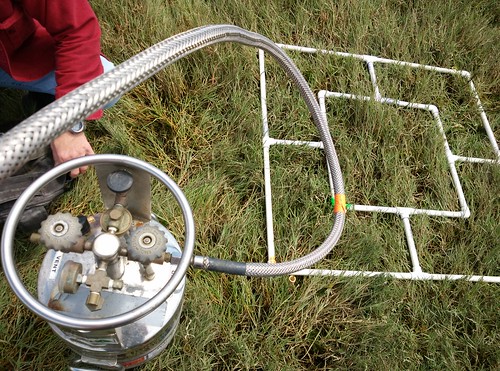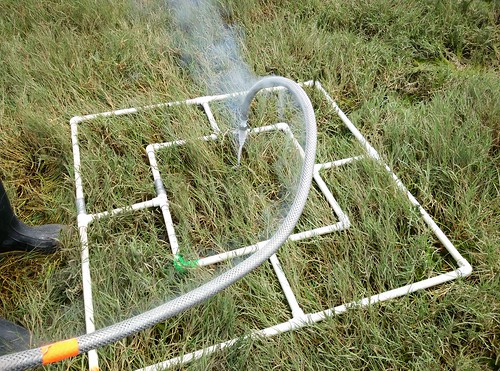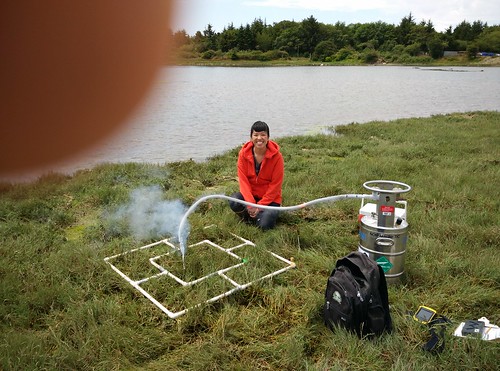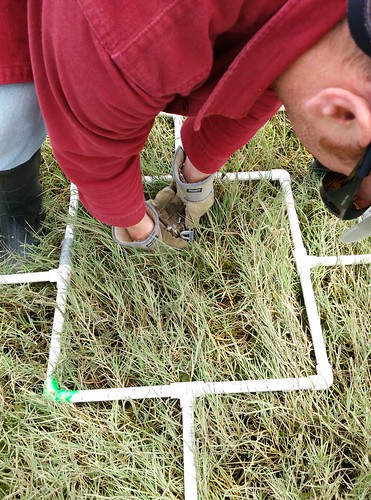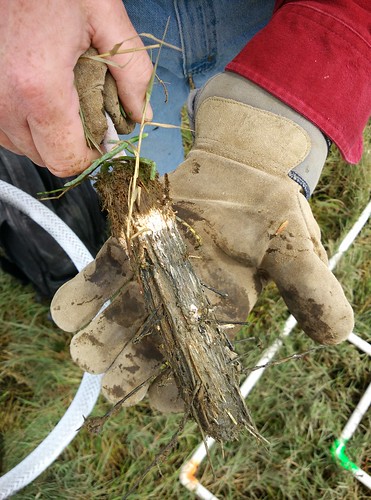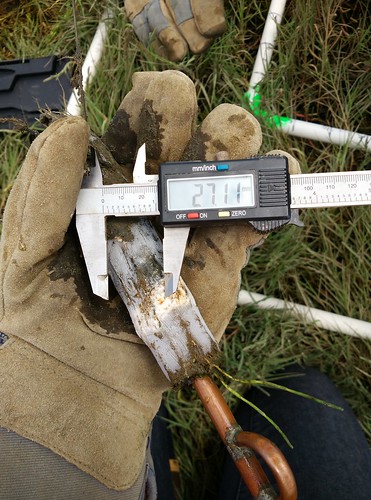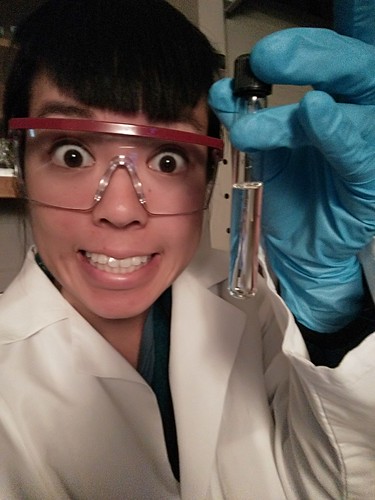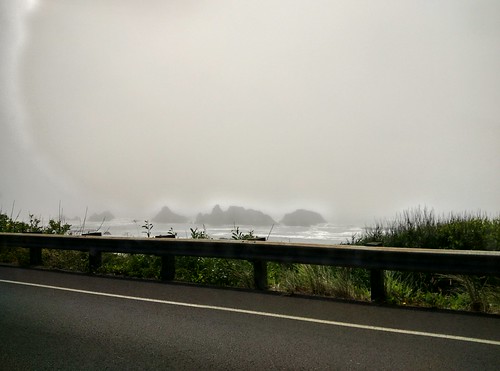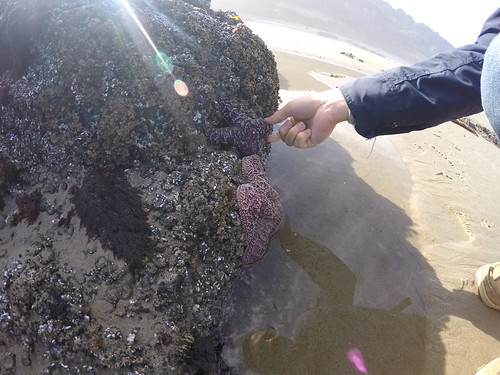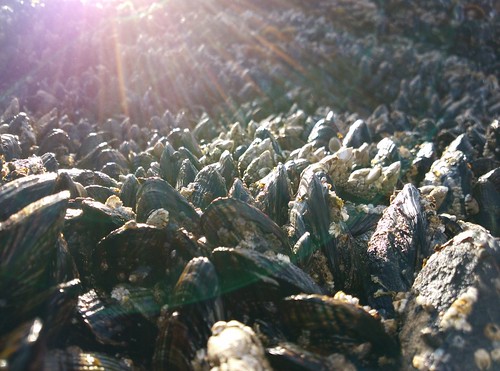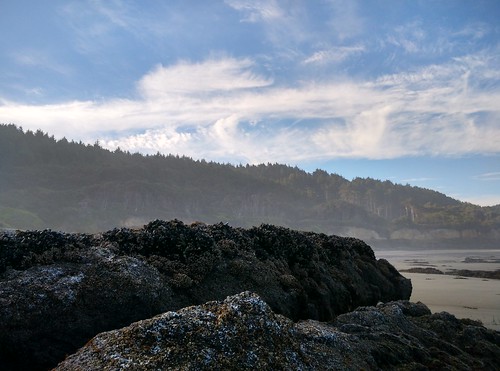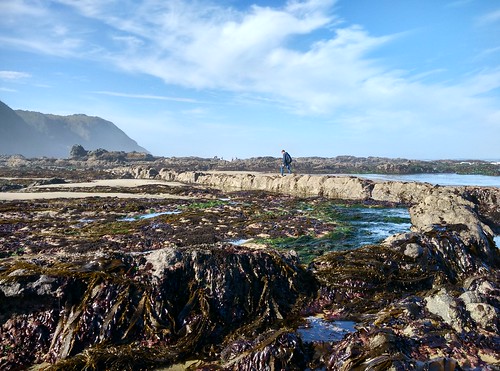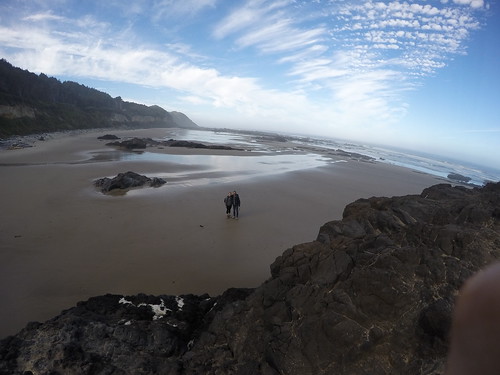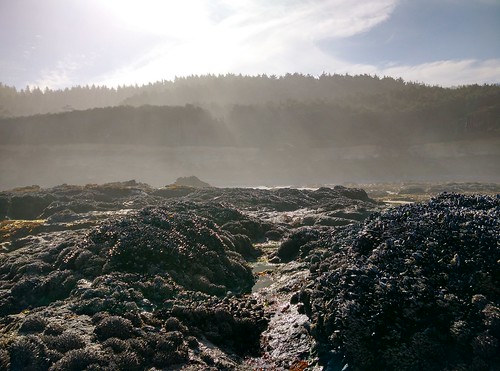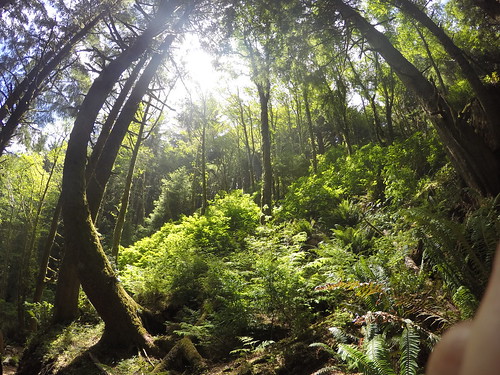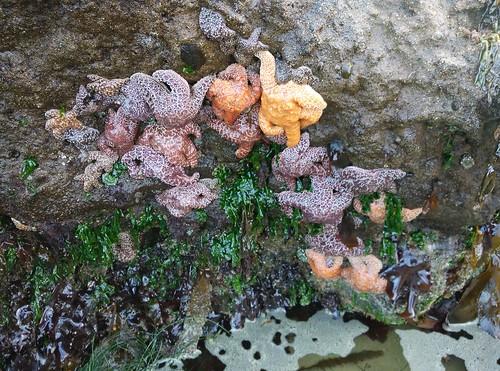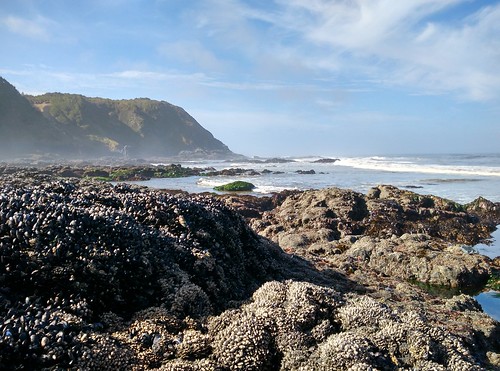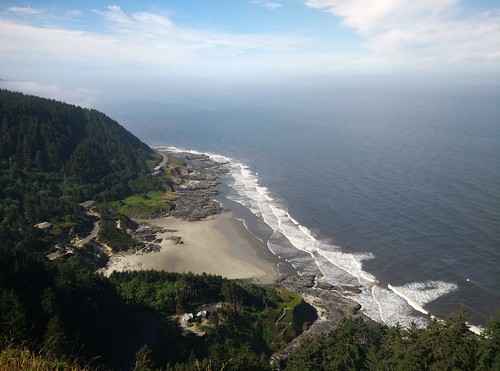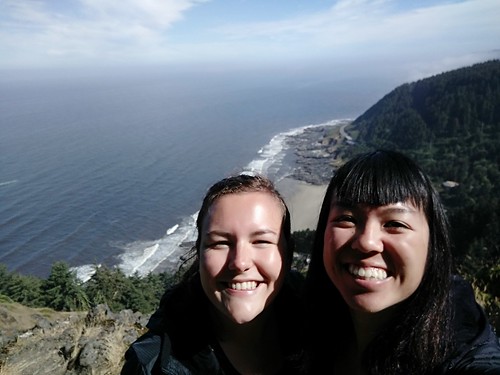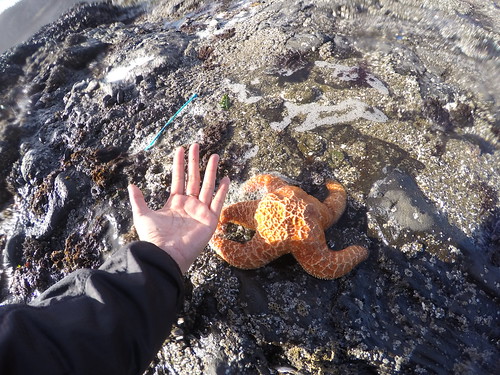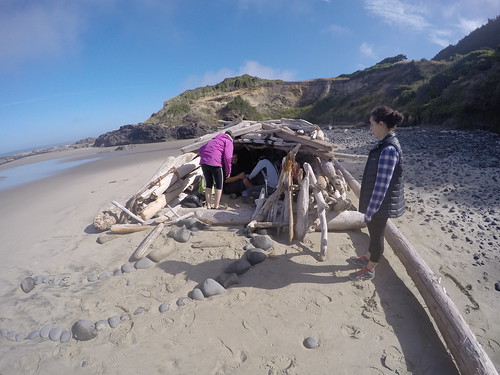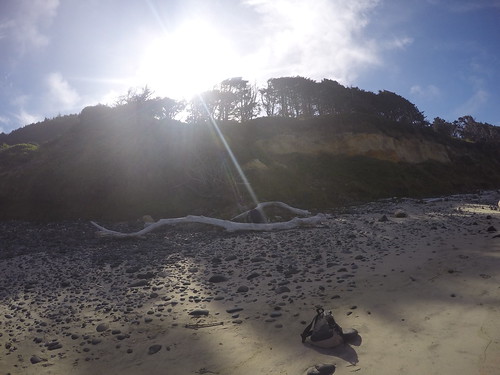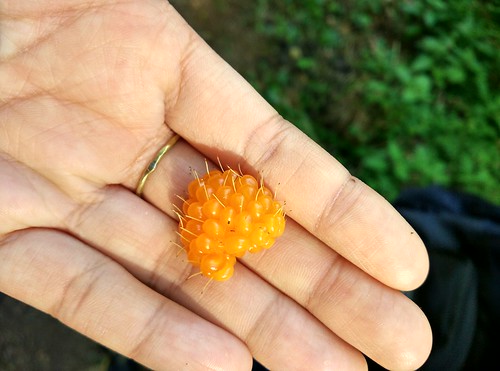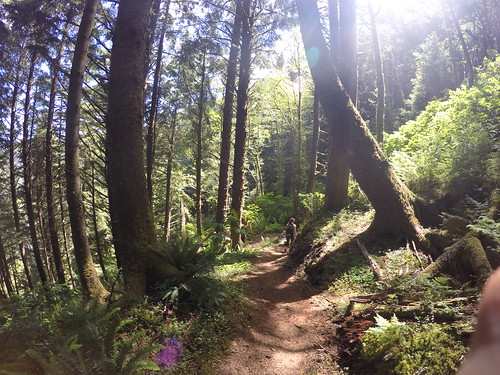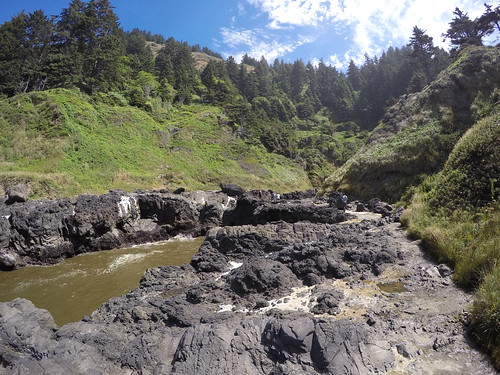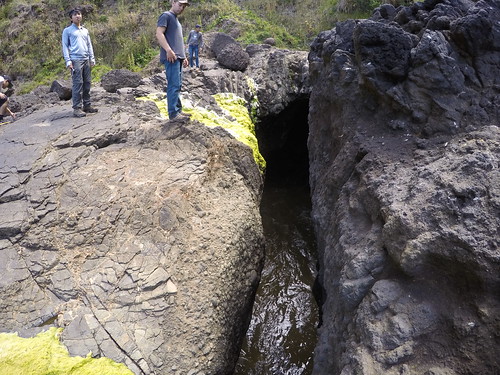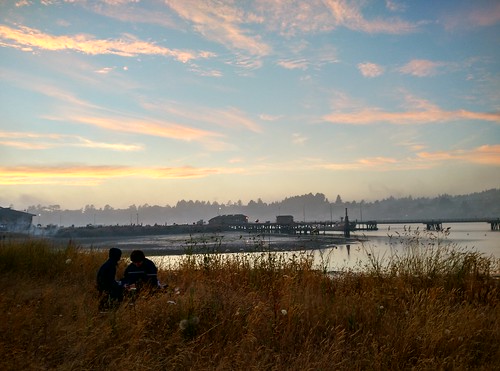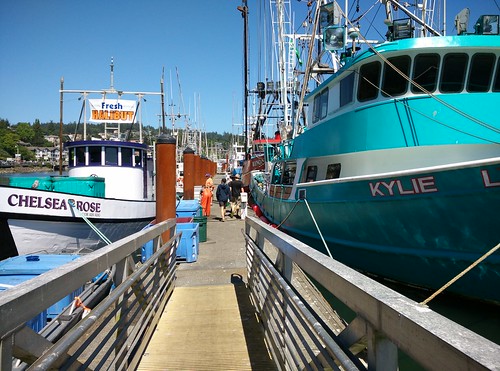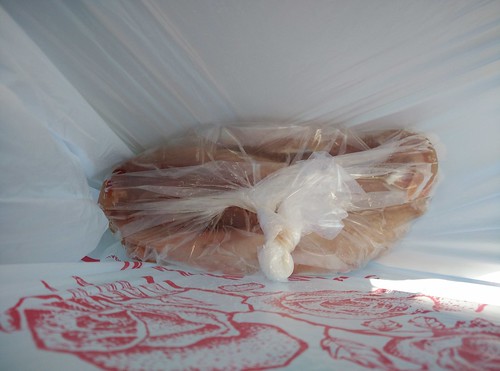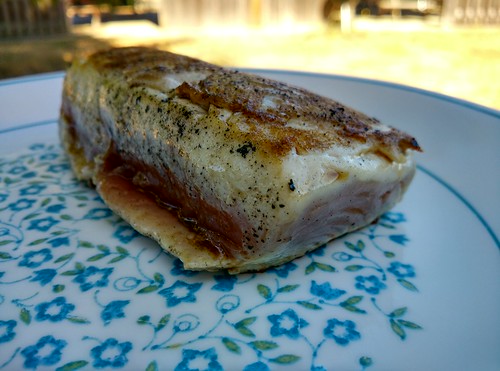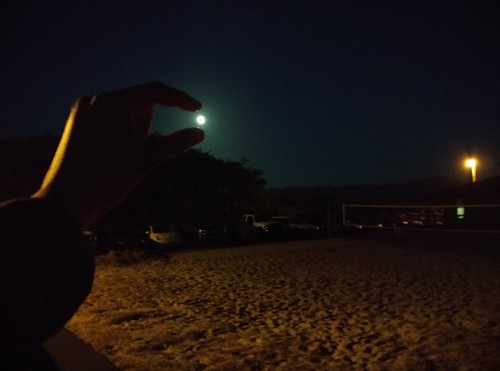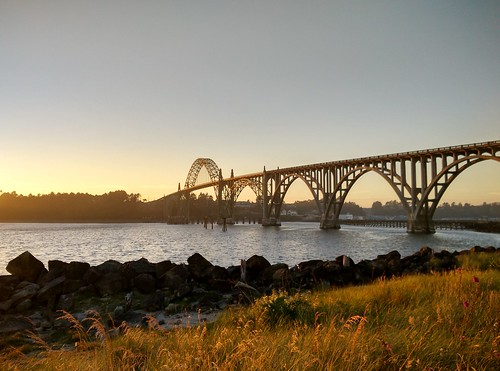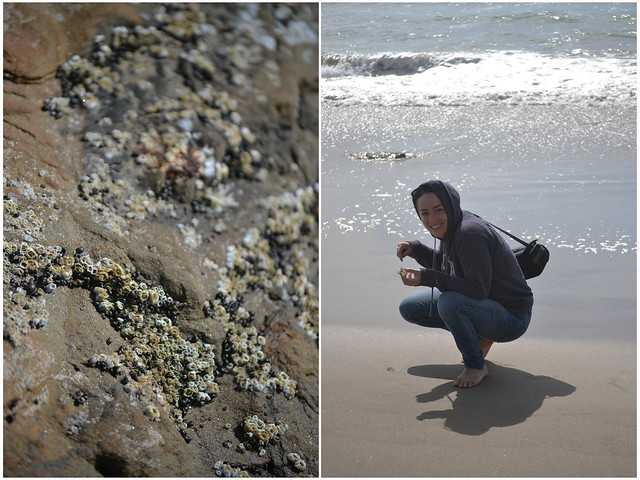I think about how the sky paints the sea purple and pink and orange, but only when it feels like it, on special days of warm nights and 9:00 sunsets. That sometimes it’s hard to find where the sea ends and the sky starts, but there’s beauty in continuity and some things are left for wonder. As we float away, ripples from the motor leave a trail behind– but this isn’t a lesson on impacts made or legacies left. Instead I want you to see the soft lines of the waves, how no one talks about how beautiful water is when both gently disturbed but also can be as powerful and encompassing as it crashes against overbearing cliffs, how easily it can take a life away but just as so give it. How it contributes to fluidity, as fluid as the blood in my limbs; the same red running current as what’s in you. The same soft lines on the surface of Anthropluera elegantissima, like water color paints– how water can spread and share and ignite hues of vastness and creativity. Or maybe more so those soft lines mimic a high school student trying oil paints for the first time– the intent is there but execution is anything but perfect. But that’s okay. Because the sea never waited for perfection; it never waited for coloring within the lines–or the sky. The sea does whatever the heck it wants. And it can not and should not ever be contained or described as a bathroom theme in an orange county beach house; the sea does not deserve that and water should never be taken for granted. But that sometimes colors should bleed from the sky onto everything we love.
Category Archives: Summer Scholars
Week Four: Celebrations and Sea Surface Temperature!
I am no longer writing for this blog as a teenager! My twentieth birthday was Saturday and my family and best-friend came down to Newport for the weekend! We walked around Hatfield, we walked along the Bay front, visited the beach, did a little hiking, and celebrated my birthday at the Noodle café. The weekend was like home at the beach!
This week at work I was researching predicted sea-surface temperatures in 2100 for each ecoregion. I also had to find values for each of International Panel on Climate Change’s Representative Concentration Pathways (RCPs). These are emission scenarios that could occur over the course of the century depending on emission restrictions and other climate change initiatives that we pursue. The four scenarios are 2.6, 4.5, 6.0, and 8.5—named after the range of possible radiative forcings in 2100. As I am finding four projections for each of the twelve ecoregions, I have to find 48 values. However, the literature does not have all of those numbers and I am waiting until this week to talk to one of mentors, Henry, to get his opinion on what the course of action should be as he was out of town most of this past week.
Nonetheless, what I have found has been worrisome. All of the values I have found project at least a 1˚C increase by the end of the century with some scenarios predicting up to a 5˚C increase. In order to determine organisms’ relative vulnerability to an increase in sea surface temperature, Henry is developing a table of thermal cutpoints for each ecoregion based on current mean sea surface temperature data and the projected sea surface temperature values. None, low, moderate, and high risk of temperature increase for the species will be determined through the species’ thermal tolerance which is indicative of their current biogeographical distribution. Henry developed a complicated series of rules that I don’t completely understand and don’t think I can properly explain quite yet.
In addition to researching sea surface temperature, the other intern working in my office, Christina (my other mentor), and I were all supposed to get field work training on a boat last Friday; however, the intern was sick and we postponed the trip until next week. Since I was waiting for Henry to return, I didn’t have much research to do. Instead, I helped Christina write an abstract for a climate conference that she will attend in November. She will be presenting a poster on CBRAT and how it is incorporating climate change impacts and specific values to assess species’ vulnerability. She has presented at this conference before, but this will be the first time she is able to report on the climate side of CBRAT which will surely please the climatologists at the conference—many of whom have published studies that I have obtained values from.
Crustacean Examination
After successfully deploying 23 pit traps in the last week (one went missing), on the 7th we were able to check them after being open for 24 hours. The results were pleasing to see, as we did in fact have crabs of multiple species in all of our traps. Many sculpin were caught as well and were noted. The number of Hemigrapsus crabs seemed to increase as we got closer to shore and the number of Dungeness was less and more randomly distributed. We also found two strange looking crabs that turned out to be Pea crabs. As planned the size selection method worked in a fairly smooth manner. I say fairly, because the majority of the traps caught small crabs, but a few actually caught large crabs that we are unsure of as to how they managed to get in. (while molted soft enough to squeeze??). This will be repeated several more times as the summer continues on.
Here is a video of the Dungeness Crab GoPro footage that was shot a few weeks back. We believe the crab is exhibiting this behavior because he (it is a male) is trying to crack his own shell open so that he may begin molting. The video is sped up from 30fps to 120fps.
https://www.facebook.com/austin.r.prechtel/videos/10207203552717977/?l=3251973081910911355

Pit trap in action

Removing the zip ties on a trap to access the catch.

Staghorn sculpins that were caught in the traps
The panoramic camera work is taking a bit longer than expected, mostly because some equipment we were thought to of had by now, has not arrived so that testing our design is not possible yet. I have been working with a few video editing softwares that allow panoramas to be made via stitching.
This weekend a trip up to The Gorge is being made. Will post pictures!
Wading into the data…
The end of week three signaled the shift into high gear or perhaps “low gear” because time doesn’t pass so quickly. The databases have been selected, the data has been pulled from papers, additional numbers have been received from researchers in several countries, and now I’m faced with making sense of it all. I know, it sounds pretty boring, and at times it can be. Looking at 4000 rows of data, debating how to weigh a lack or surplus of information from one site in order to compare it to another, figuring out how to make it all useful…it’s particularly challenging. But before we can begin teasing out exciting new information, the data mining stage is crucial. Outside the mind-numbing, we had a number of other activities going on this week: we had a productive and clarifying conference call with the lead developer of one of the models we will be working with, the Natural Capital Project’s inVEST Blue Carbon model. In addition, the grad/postdoc students at the EPA hosted an extremely helpful resume/CV workshop…it’s been 4 years since I changed the format of my CV and it definitely needed a refresh.
This past weekend was also the Fourth of July and I can’t think of any better way to celebrate America than going out bright and early to explore Caper Perpetua, part of a federally protected National Forest. It’s a beautiful manifestation of one of the world’s greatest land conservation schemes–the US National Forest System, which is truly something all Americans should be proud of. While there, I finally satisfied one of my goals coming out to Oregon: tide-pooling on the Pacific coast.
A little staff bonding
This week has been great being back in the office with our mentor, Tommy. We have been catching up on data entry from all of the data that we have been collecting up at Cape Falcon Marine Reserve the past few weeks. We’re headed back up there this coming weekend for our first weekend trip, so we’re excited to see the crowds mobbing to the beach for some surf time! Being back in Newport has provided us with opportunities to engage in a little staff bonding. Theo and I decided to donate blood with the Red Cross together yesterday; the donation site was located right outside of Rogue brewery! A quick walk from Hatfield. We were gifted $7 giftcards to Rogue for our donation, which we promptly used immediately after our donation was finished. It feels great to be more a part of the Newport community!
Cores, Chlorophyll, Canada
It’s really awesome not being in 90+ degree weather.
On Monday, some VIP EPA folks came down to the Newport office to poke around to see what our office has been up to (and to escape the heat too, I’m sure). Prior to my involvement/arrival, my mentor had developed a method for testing whether Oregon marshes were “keeping up” with rising tides by looking at marsh accretion. In eight different Oregonian estuaries, marker horizon method sites were implemented. By pouring on feldspar clay onto plots, an initial baseline is set. From then on, any time in the short or long term future a sediment core sample is taken, based on the distance of sediment accretion from the feldspar layer initially laid down, would tell you the amount of accretion happened in that period of time. To showcase the methodology, we drew a sample core from the marsh outside our office to show our visitors. Sediment cores are extracted using liquid nitrogen.
By measuring soil accretion, we can quantify how much marshlands (which are critical habitats for wildlife, responsible for nutrient removal, and other ecosystem services) are being affected by sea level rise. Current estimates suggest a 2-3 mm annual rise. Based on our sample core, we exceeded that estimate– which suggests, the sea level rise is happening and affecting marshlands at a faster rate than predicted.
Something this visual is really valuable in showing those who might not have a science background the kind of issues we’re dealing with. I really liked this method of marshland accretion measurement because it is 1) simple 2) easy 3) effective 4) very visual 5) consistent, which I feel are good characteristics every good study and design should have.
I was only involved with the prep for the core sample demo, and instead, was a part of another demo happening in the lab. A study a post-doc working with Cheryl (my mentor) is working on, is the effects of macroalgae mats on cockle behaviors. It was super cool seeing another visual demonstration. We had a tank set up with a layer of sand and a few cockles doing what they do best– burrowing. While we had the cockles chilling and hanging out, we placed macroalgae mats on the surface of the water, and by inducing a psuedo low-tide (by slowly draining the water from the tank), we were able to observe the cockles’ behavior.
When macroalgae mats descend (!!!!) on cockles, the pressure from the weight of the mats induce the cockles to use their foot to essentially, “escape” and try to push themselves out of the sediment and out of the mats. The study they were presenting was super cool and proved that this behavior was due to pressure changes detected by the cockles, instead of chemical cues or any other factor.
For the rest of the day and the day after, I proceeded to finish my chlorophyll extractions in the fume hood. It’s always disorienting working in a fume hood in subdued/dark settings for a majority of the day and then emerge out of the lab caves and realize it’s still day time. But I love it– lab work is my calling. I hope I’m realizing it’s my calling instead of me going crazy under dark room settings.
We got to go out to the field this week as well ! Siuslaw estuary is officially my favorite system. Working out in estuaries and seeing the gorgeous never-ending forest landscapes of the PNW, has really convinced me to buy a house boat and live on the waters with my dog.

The night before fieldwork, the interns and I watched Bourne Identity, and I proceeded to have a uncannily similar nightmare soon after. I dreamt I was a fisherwoman on a boat in the Bering Sea and the boat capsized. The next thing I knew I was being pulled out of the waters and rescued with two of my crew. Looking down at my knuckles, I noticed stitches in the shape of an X. I freaked out and my crewmates told me to check the rest of my body. I lifted up my shirt and my crewmates exclaimed there was a branding on my back (Bourne-esque stuff here) and yelled, “DID THEY TAKE YOUR KIDNEYS?!” I then woke up to reality, in a sweat.
Why am I telling you about my weird nightmare?
The beginning of the Siuslaw sample sets were in the marine layer and was very similar to an episode of Deadliest Catch. Except, maybe without all the storms….and the crabs…and the general fishing…and the extreme weathers in general. Maybe it’s wrong for me to compare my not-so-fair weather conditions with one of the riskiest occupations on the waters. But anyhow, there was wind and salt water spraying on my face and the boat was rocking and I was loving it. It was definitely one of the most intense fieldwork I’ve had thus far. It calmed down as we went upriver, so I didn’t have to endure for too long.
After fieldwork, the post-doc I work with back home (whom I’ve become super close friends with) ended up moving to Canada this past month, and she surprised me with a phone call to catch up! I thought it was such a coincidence since shortly after the phone call, the interns and I attended a Canada Day get together put on by one of the grad students at Hatfield. It was only appropriate for this cake to make an appearance:
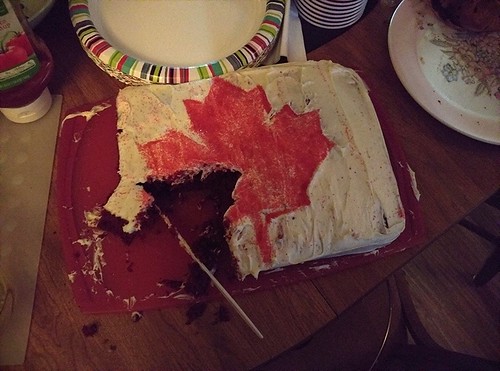
I learned a lot about poutine, Canadian hospitality, and the other grad students at Hatfield. Also, the ratio of dogs to people at this Canada celebration was amazingly high. If Canada is as fun as our Canada Day celebration, I wouldn’t mind spending some time there.
On Thursday, the EPA employees got to leave 2 hours early! Yay federal holidays! Yay working for the feds! Yaaaay!
For the Fourth, the interns had the opportunity to go tide pooling (real verb, y’all) and hiking around Cape Perpetua! Listening to country while driving up a mountain, instead of hiking up to see the view was real American of us. But, we were able to hike on several trails at the top, so I got to soak in some good PNW forest-ness.
Here’s me being a dork on the Oregon coast:
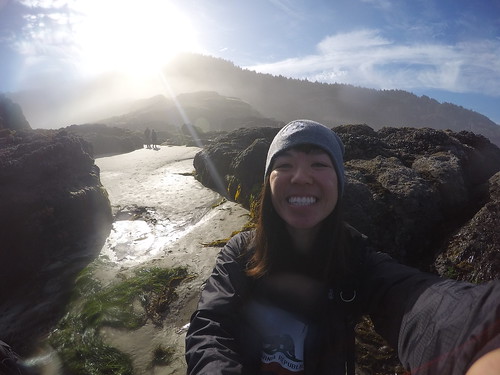
Then we got to visit Devil’s Churn on the way back…
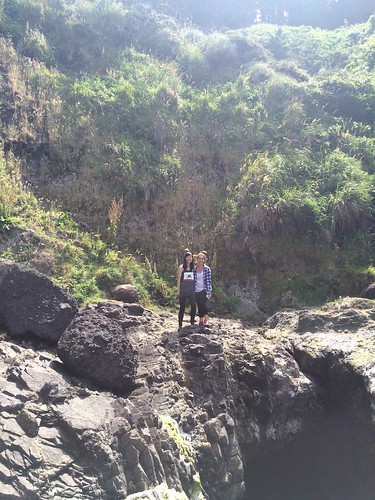
Thanks to the Chelsea Rose (pictured below) and some well-weathered fishermen, we bought the freshest albacore tuna, right off the dock. I try my best to strive to obtain all my food as locally as possible, with the least food miles tacked on– but I’ve never had the opportunity to buy fish, the freshest possible way. We’re definitely spoiled around these parts.
Mmmmm… seared to perfection.
Enjoy a couple more photos of life at HMSC:
Until next time…
Getting Started
It’s Monday morning of Week 4, already! Last week was cut short by the three-day weekend that came with Independence Day, but it was productive nonetheless. On Thursday, I hooked a ride to Newport and spent the afternoon on my first interview, at a CV workshop, and attending the weekly seminar at HMSC. It was a great day, all around, and I was happy to see a few of the other scholars, again, and to be able to attend the afternoon talk from Laurie Weitkamp on salmon in the Pacific Northwest. Today, I’ll be spending some time listening to and transcribing portions of the conversation I had on Friday, and trying to figure out what I can do to improve my next interview. I’m waiting to hear back from a number of people I emailed at the end of last week, so my calendar should continue filling up!
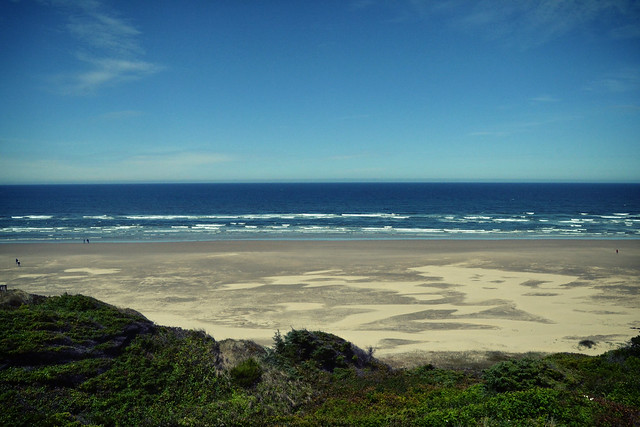 Although I’ve been over to Newport three times, already, it has always been for work and I haven’t seen much outside of HMSC. I finally got the chance to explore the coast a bit more this weekend when my family came up from California for Independence Day! We went up to the top of Mary’s Peak–the highest point of the Coast Range, at 4,097 feet–and then spent the afternoon just north of Newport, exploring the beach and some impressive geological features at Devil’s Punchbowl State Park. Agate Beach was incredible that evening, as well, with its dunes on the upper beach and the flats sloping off into infinity at low tide. One of my goals for the summer is to read two natural history books on the Oregon Coast; seeing more of the coast this weekend got me excited, and I’m hoping to find some good reads at the library this week.
Although I’ve been over to Newport three times, already, it has always been for work and I haven’t seen much outside of HMSC. I finally got the chance to explore the coast a bit more this weekend when my family came up from California for Independence Day! We went up to the top of Mary’s Peak–the highest point of the Coast Range, at 4,097 feet–and then spent the afternoon just north of Newport, exploring the beach and some impressive geological features at Devil’s Punchbowl State Park. Agate Beach was incredible that evening, as well, with its dunes on the upper beach and the flats sloping off into infinity at low tide. One of my goals for the summer is to read two natural history books on the Oregon Coast; seeing more of the coast this weekend got me excited, and I’m hoping to find some good reads at the library this week. 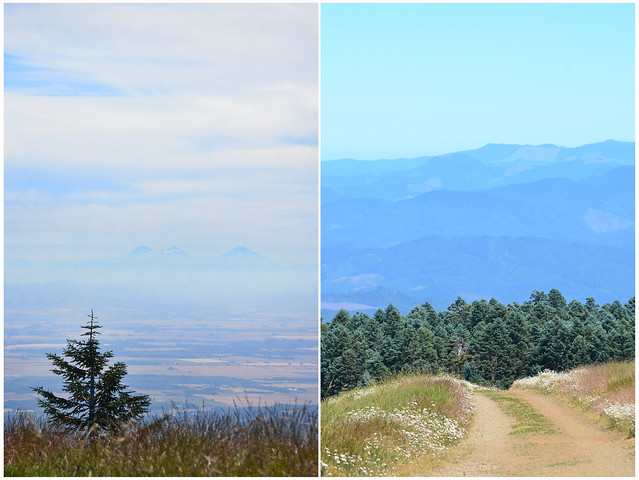
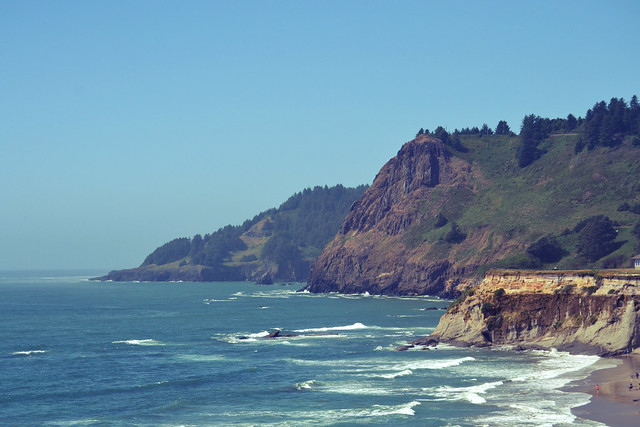
Week Three: (Sea)stars and Stripes
This past week has been very exciting! A new intern came to work in my office and it has been a lot more interesting having someone to share my eight-hour day with. Anthony is a pathways intern from California and it’s his first time in Oregon, so we have been showing him around. This past week I have been finding aragonite saturation thresholds for decapods (i.e. crabs, lobsters, shrimp). I needed to find low, moderate, and high values. So a low aragonite saturation value, would have a high impact on calcifying organisms, and a high aragonite saturation value would have a lesser impact. The less aragonite in the ocean, the harder it is for organisms to calcify, so they have to devote more energy to calcifying and less to other things, such as growth. Thus, if an organism has trouble growing because the aragonite saturation state, the impact would be less than if the aragonite saturation state has caused the organism mortality. Based on the literature, we decided 1.5 would be an appropriate low-impact threshold and 0.9 would be a high-impact threshold. We could not find anything that supported a moderate-impact threshold, so we just averaged the low and high numbers and used 1.2 as a moderate-impact threshold.
In addition to working all week, the interns went on many adventures. We had another bonfire on the beach on Thursday night and spent our day off on Friday relaxing at the Bayfront. On the fourth of July, we got up early to see the tide pools during low tide at Strawberry Hill. We saw starfish, urchins, anemones, fish, crabs, and seals! It was so amazing to see all of the marine life in the wild!
Afterwards, we went hiking near Cape Perpetua, went to Devil’s Churn, and stopped by a flea market in Yachats. We got back to Hatfield by 1 and got all showered and fed for the small Independence Day party we had. The day was completed with fireworks overlooking the bay.
We worked during the week and played during the weekend, a week that was perfectly balanced.
Prepwork
Week two effectively started to push me outside my comfort zone. After a week of background reading to get myself acquainted with the history, organization, and workings of Sea Grant, I found it was time to jump into the task at hand. That is, I needed to start figuring out who to talk to this summer, what information I’m interested in, and how to effectively compile that data.
I say that this has pushed me outside of my comfort zone because my background and undergraduate training is in natural science from the academic perspective. The type of reading I’ve done is biological primary literature, and the type of work I’ve done is field monitoring and lab research. To plunge into the matter of collecting qualitative information through interviews and grapple with evaluating that data to produce an evaluative report is a totally new endeavor for me. I feel both excited and terrified (don’t worry, the terror is wearing off with each work day).
In my reading this week, I have found the literature on engaged scholarship and evaluation to be both interesting and helpful. Some of the conceptual flow charts and evaluation matrices I’ve come across are helping me build a framework for moving forward. Additionally, I had a long conversation with a friend of mine who has a background in anthropology, ethnography, and the collection of information through oral interviews. Her perspective, advice, and excitement was really helpful and gave me a big boost in confidence!
I’m feeling ready to sit down for some conversations! I’m excited about the opportunity I have to talk to a wide range of people this summer–researchers, extension agents, Sea Grant staff, OSU outreach and engagement personnel, and perhaps some community stakeholders. The experiences and perspectives people will share should be varied and fascinating. I’ve already sent out my first batch of emails and am prepared to fill up my calendar and hit the road (whether on foot across campus, or by car to the coast)! I’ve got one meeting set up so far, and lots to go.
Apologies for the lack of media this week–the inside of my office hasn’t changed much since the last post, but I’m sure I’ll have more beautiful things to share in due time. Stay tuned.
Week 2: Dungeness Crab in the Lab
Week 2 has ended and I have to say that Oregon is becoming more and more homely. Friends are being made and new experiences are occurring. Early in the week, core samples were taken in order to capture mud shrimp. A core sample, to those of you unaware of what that is, is where you take a large metal tube and press it completely into the ground and then proceed to dig all of the sediment out and sift through it while for mud shrimp. To get the core into the ground you must stand on top of it and do the “shrimp dance” which consists of wobbling motions. Once the mud shrimp were captured we measured the carapace length, sexed them, and checked for the infestation of parasites. The parasites are definitely not the most appealing creatures to look at, but they are still very interesting.

The mudflats show no mercy to those who science.
Mid-week many bucket lids were purchased (24 total). The reasoning for this is that we began to build experimental pit traps that would be size selective for the capture of small Dungeness crabs. We made two different designs, one with a larger whole and steeper funnel, and the other with a smaller hole and more gradual funneling. To set these traps, you basically just dig a hole in the ground and place the bucket in and wait for the crabs to fall in. Some people around here call them the “Dodos of the sea”. This is not due to having a resemblance with birds, but because of their ease of capture. After setting the traps we decided to place GoPro cameras onto two of the traps to capture some footage and observe the crab’s interactions with the traps. I’ve taken a brief look at the footage and there is some interesting behavior to note. I will definitely be including some of the video in my next blog entry. Several crabs were captured overnight, as well as a few Staghorn Sculpins, and a lone jellyfish. The next step will be to build 24 traps in total, and set them out in various locations. I’m really looking forward to see how things will play out with the implementation of our traps.

Young Dungeness crab captured in the pit traps
It’s been only two weeks and I already feel like I’ve learned quite a lot. Being from a freshwater background, marine and estuarine has offered a new perspective. 8 more weeks to go!




